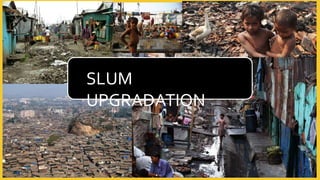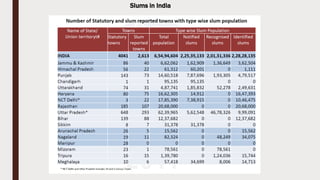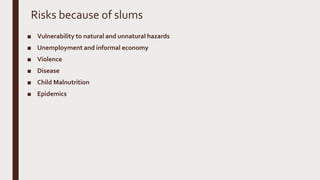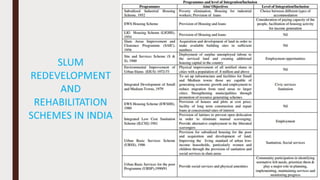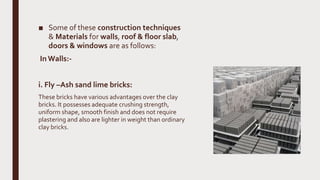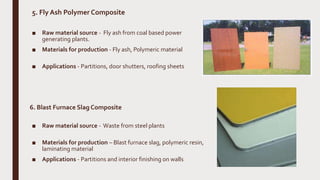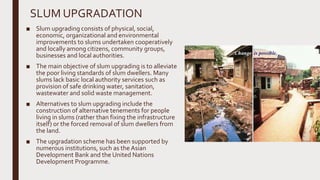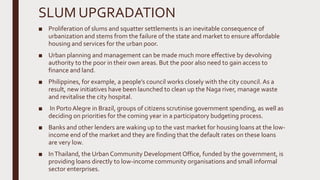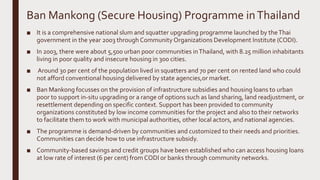The document discusses slum upgradation in India. It begins by defining slums and their characteristics such as lack of basic services, substandard housing, overcrowding, and insecure tenure. It then discusses the causes and risks of slums. Approaches to tackling slums include punitive actions like eviction, curative actions like upgrading infrastructure and services, and preventive actions like improving access to housing. The government of India has implemented programs like the JnNURM and IHSDP to support slum upgradation through infrastructure improvements and affordable housing. Low-cost construction techniques used include fly ash bricks, concrete blocks, and prefabricated materials. The goal of slum upgradation is to improve living standards
